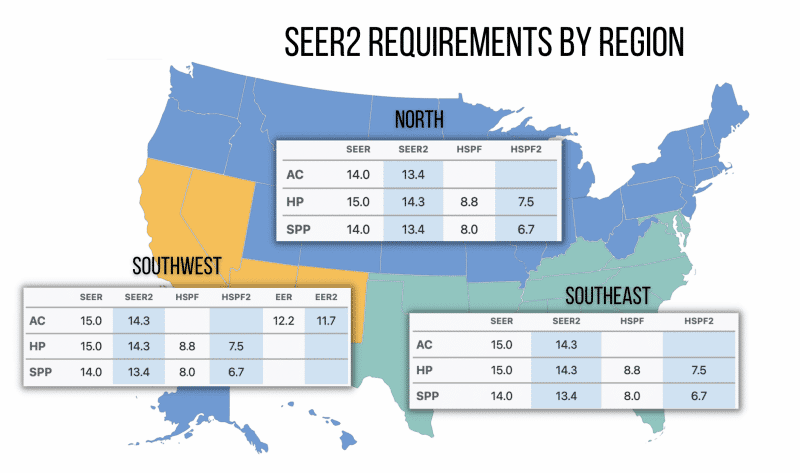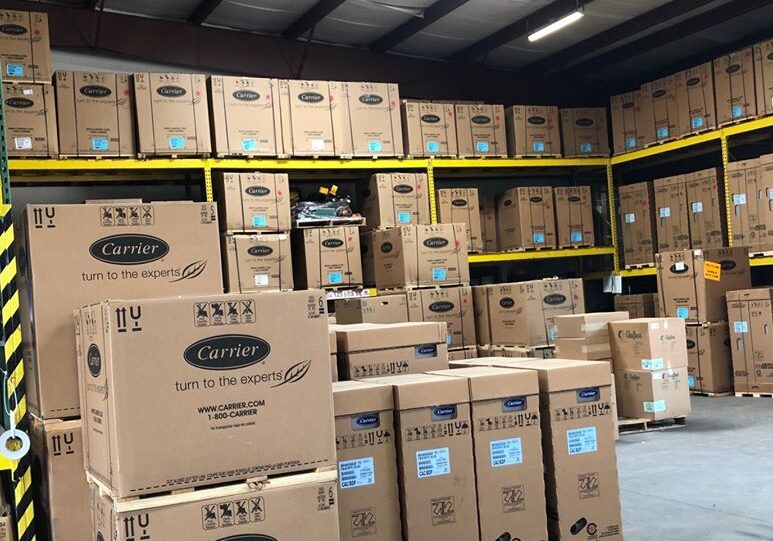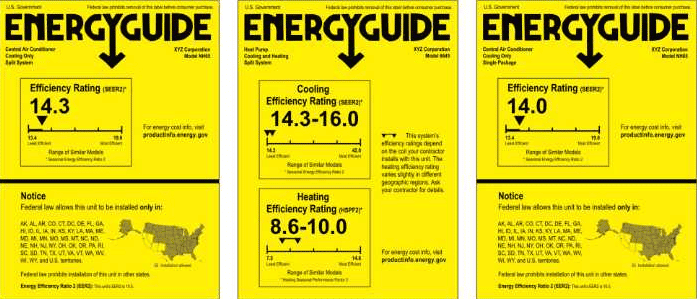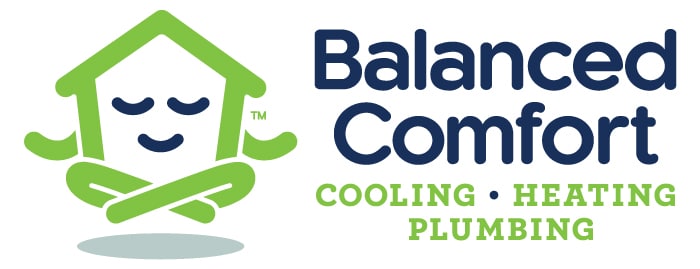What is SEER2?
Seasonal Energy Efficiency Ratio 2 (SEER2) measures an air conditioner's cooling efficiency which will replace SEER. SEER2 is calculated by dividing the cooling output (in BTUs) by the electrical energy input (in watt-hours). The higher the SEER rating, the more efficient (SEER2) the air conditioner.
The ENERGY STAR is a U.S Department of Energy program that rewards air conditioners with higher SEER ratings than the minimum required by law for efficient operation. To qualify, units must be 14.5 SEER2 or above on their labels which represent at least 15% savings in energy use. Also, it takes into account new external static pressure conditions that better reflect real-world conditions and energy costs.
The new M1 testing procedure will increase systems' external static pressure by a factor of five, to better reflect field conditions in installed equipment. By using this change, the nomenclature is being used for SEER2 ratings, which includes EER2 and HSPF2 information as well.
New Testing Method Requirements (M1)
The U.S Department of Energy (DOE) has just published new test procedures for central air conditioners and heat pumps that will take effect starting January 1st, 2023! One major difference between the SEER rating system with its current counterpart is the way each unit needs to be tested under the M1 standard; it contains much more realistic field conditions than before, especially when people could only expect high performance from their HVAC equipment, if they had an installation done by professionals who know what kind of model fits best.
Addressing Static Pressure
The current SEER does not properly emulate ductwork and external static pressure of HVAC systems. By switching to 0.5" WC, we can accurately reach real world applications of systems.
Limiting Evaporator Coil Surface Area Size
Fan off Delays
Heating Mode Test
New varible speed factor for SEER2
SEER2 M1 Testing Procedures
The goal of new M1 testing procedures is to represent better external conditions seen in the field. Current SEER (0-inch water) does not accurately emulate ductwork and static pressure on HVAC products; it’s often misleading or completely unrelated, when applied outside in a controlled test environment like your home's furnace room! That said, with increased levels at 2 inches worth per gallon—the same as what you would find outdoors during summertime rainstorms!
New M1 Test will push 2022's 14 SEER down to 13 SEER which won't meet standards in America
How does SEER2 Impact Homeowners?
It is estimated by the U.S. Emergency Administration (EIA) that 76 million homeowners are using a central air-conditioning unit which equates to 64%. Only a small portion of homeowners (11%) are using heat pumps for their HVAC equipment.
Department of Energy Conservation states that in total, households using A/C systems and heat pumps can save $2.5-$12.2 billion on energy bills during a 30- year period following the new standards.
As of January 1st, 2023 HVAC contractors can no longer sell or install equipment that does not meet the standard requirements.
Are you in Fresno, Visalia, or Oakhurst? Get your new unit NOW and save on your bills!
Benefits and Costs to Consumers
DOE take on consumers of A/C systems and heat pumps which are measured by the average life-cycle cost (LCC) of their air conditioning units and payback period (PBP).
Fortunately, the average LCC savings for all products are positive. Each class falls below the average lifetime of their heating and cooling equipment payback period. Estimated to be 21 years for cooling and 15 years for heat pumps.
Modern systems today use 25-50% less energy compared to systems 15-20 years ago

* N = Northern region; HD = Hot-dry region; HH = Hot-humid region.
** The standard levels for Packaged Unit, Packaged Heat Pumps, Space-Constrained equipment, and Small-Duct High-Velocity systems are at the baseline level in the Recommended TSL, so there is no impact on consumers.
SEER2 Region Regulations
The change from SEER to SEER2 has made inventory management more complicated in ensuring existing inventories comply with the new efficiency standards. Compliance for 2023 ratings is based on having an outdoor unit that only runs during certain times of day and night, or when it's hot outside--this type can be listed on your energy guide label as "coil-only." If there isn't one given then use whichever rating would give less output

Southwest Region
- SEER2 rating of at least 14.3 for all AC systems below 45,000 BTU
- SEER2 rating of at least 13.8 for all residential central air systems 45,000 BTU and above
- SEER2 rating of at least 15 for all heat pumps
Air conditioning systems can not be installed or sold if they do not meet the SEER2 requirements after January 1, 2023 in the Southwest Region.
North Region
- SEER2 rating of at least 13.4 for all residential air systems
- SEER2 rating of at least 15 for heat pumps
HVAC equipment built before January 1, 2023 can be sold and installed. HVAC units after that date are required to meet the new SEER2 Regulations.
Southeast Region
- SEER2 rating of at least 14.3 for all AC systems below 45,000 BTU
- SEER2 rating of at least 13.8 for all AC systems 45,000 BTU and above
- SEER2 rating of at least 15 for all heat pumps
Any HVAC system cannot be sold or installed in the Southeast Region by January 1st if they do not meet SEER2 standards.
National Benefits and Costs
The Energy Department's analysis indicates that adopting new energy efficiency standards for central A/C units and heat pumps would save a significant amount of energy. In the case without these amendments (referred to as "no-new standard"), lifetime savings amounts at 3 Quadrillion Btus over 30 years--or 2%.
The net present value of consumer costs and savings for the amended standards ranges from $2.5 billion (at a 7% discount rate) to over 12 billion dollars(33%). This number expresses the estimated total value in operating-cost reductions minus an increase on product/installation price tags purchased within 2023 -2052.
Impact on Manufacturers
With the new SEER2 regulations manufacturers must abide by these standards and adjust components to meet them. Units that have a rating of 14 and under are not allowed to be sold across America. Depending on regions, units must be in compliance with the proper Energy Guide and SEER2 Ratings. You may have to install additional components such as a thermal expansion valve.
Impact on Distributors and HVAC Contractors
Distributors will not be permitted to sell units with a SEER rating under 14 after January 1, 2023. HVAC contractors can no longer purchase, sell, or install units which don't meet the new SEER2 standard after January 1st of 2023.
New Regulations for Inventory Compliance in the HVAC Industry

With the recent passage of new regulations regarding equipment installations, businesses in the South and Southwest regions must ensure that their existing inventory is compliant with these standards. This can be done by checking if it has been updated to display an accurate rating according to its energy guide label which will list either indoor or outdoor units based on how efficient they are rated (i e least).
SEER Standards 2023 Energy Guide Labels

The Energy Department has released new labels for home appliances that will help consumers compare energy usage and the costs of equipment. All 2023 compliant products are required to include this information on their respective packages with the SEER2, EER2 & HSPF 2 ratings included in all three listings."
How these changes affect HVAC Manufactures and Equipment

Air Conditioner Condensing Units
Starting off at 13 SEER during the rollout- which means that it only has an annual average rating below 14-, all ACs must meet M1 tests defined by DoE before they can go into effect nationwide; this includes units made before 2023 as well if their manufacturers haven't already updated them since then.
Heat Pumps
The future of heat pump technology is bright, with new regulations set to take effect on January 1st 2023. In order for your home's cooling system remain functional after this date you'll need an updated model that has been rated at least 15 SEER under pre-SEER2 testing protocol - or M1 certification if it was built before then!
Single Packaged Units
The EPA and Energy Star ratings for any 14.0 SEER SPP unit built before January 1st of this year still apply, but starting with the new model year (2023), single-packaged units must also meet requirements involving HSPF2 levels at 6.7 gal/rations per hour 2 & 13dB(A) sensitivity rating 3 . This change may affect your current home cooling system if it is not uprated as well!
Mini Splits
Starting January 1, 2023 the SEER2 regional minimum efficiencies will apply to mini split as well as other modern hvac systems.
